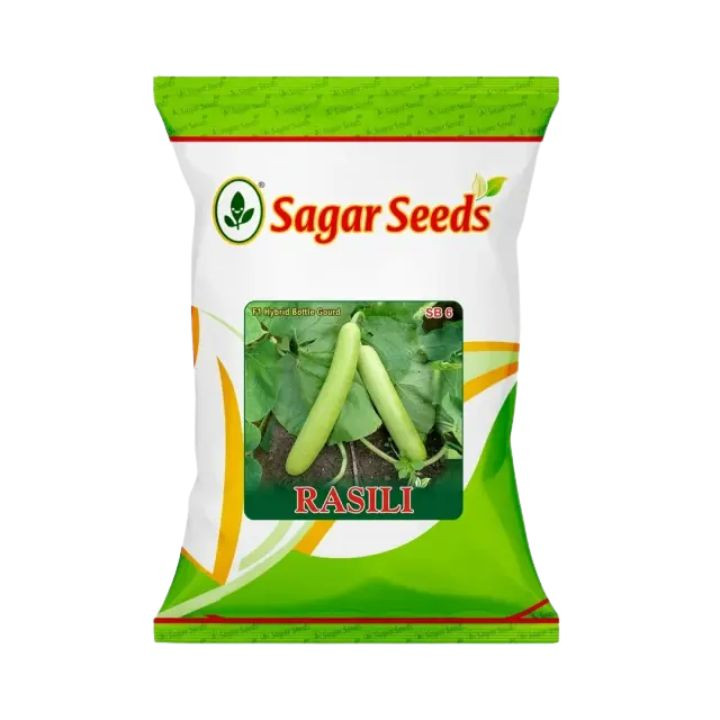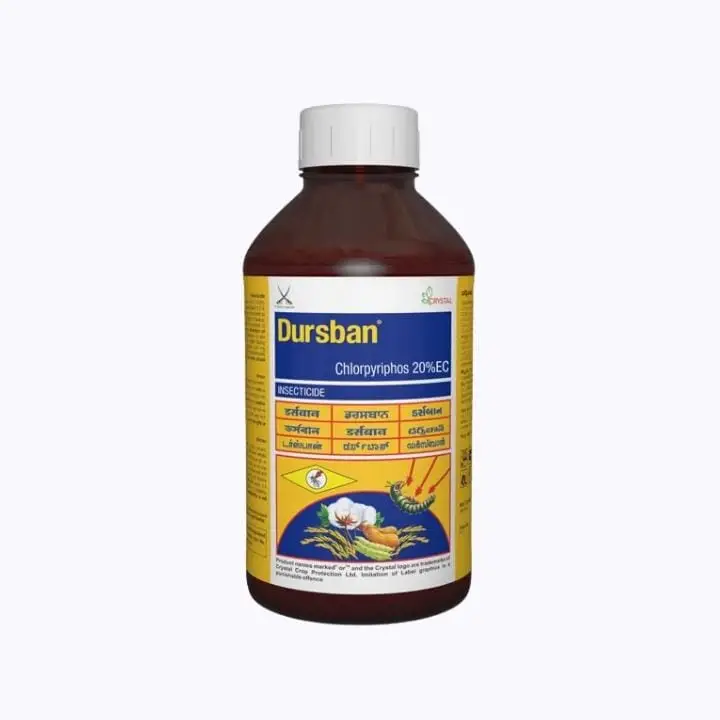Sagar Rasili F1 Bottle Gourd Seeds (50 g) – Premium Hybrid for High, Marketable Yields
Sagar Rasili F1 Bottle Gourd is a dependable hybrid bred for uniform, long cylindrical fruits, smooth light-green skin, and tender, mild flesh that suits everyday cooking. Growers choose Rasili for its vigorous vines, strong field adaptability across seasons, and practical tolerance to common bottle gourd stresses—helping deliver steady harvests with fewer quality rejections. Whether you manage a commercial trellised block or a well-run kitchen garden, this hybrid is designed to combine yield, fruit uniformity, and transport-friendly firmness for confident marketing.
Product Specifications
| Brand |
Sagar |
| Variety |
Rasili F1 Bottle Gourd |
| Fruit Shape |
Long, cylindrical; consistent sizing for grading |
| Fruit Color |
Light green, smooth skin |
| Flesh Texture |
Tender, fine-grained; pleasant taste |
| Average Fruit Length |
35–45 cm (under recommended management) |
| Maturity Period |
50–55 days to first harvest (season-dependent) |
| Yield |
High (program and season dependent) |
| Cultivation Type |
Open field; suitable for trellis/net support |
| Disease Resistance |
Bred for field tolerance to common bottle gourd diseases (use with local IPM) |
| Packaging Size |
50 g |
Key Features
- Tender and flavorful: Mild taste and soft texture suited to everyday recipes.
- High-yield hybrid: Abundant, uniform fruit set helps maximize pick rates.
- Vigorous plants: Strong vines with wide adaptability to diverse climates.
- Market-ready look: Long, cylindrical fruits with smooth skin for better saleability.
- Resilient performance: Practical tolerance to common issues supports steadier output.
- Transport-friendly: Firm, uniform fruits support grading and reduce losses in transit.
Grower Benefits
- Market-friendly lots: Consistent length and appearance streamline grading and packing.
- Culinary versatility: Works well for stir-fries, curries, soups, and stuffed dishes.
- Cost efficiency: Field resilience helps minimize avoidable inputs when paired with good agronomy.
- Wide adaptability: Performs across seasons with proper nutrition and irrigation discipline.
Sowing & Crop Management (Experience-Based Guidance)
- Climate & soil: Warm-season crop; choose well-drained loam to sandy loam with good organic matter. Avoid waterlogging.
- Bed & spacing: Raised beds or ridges for drainage. Typical spacing on trellis: rows 1.8–2.5 m; plants 0.6–1.2 m, adjusted to vine vigor and season.
- Sowing method: Direct seed 2–3 cm deep, 2 seeds per hill; thin to the strongest seedling. Transplants from healthy plugs are acceptable where used.
- Nutrient program: Apply a balanced base of N-P-K with calcium, magnesium, sulfur, and essential micronutrients. Split nitrogen through early vine growth and flowering. Use soil/tissue tests to fine-tune.
- Irrigation: Keep uniform moisture from establishment to fruiting. Avoid extremes; mulch helps stabilize soil temperature and moisture.
- Trellising & pruning: Train vines on nets or wires for straighter fruits and cleaner harvests. Remove malformed early fruits to maintain uniformity.
- IPM: Scout routinely; integrate crop rotation, sanitation, sticky traps, and labeled crop protection as per local guidance.
- Harvest: Pick at marketable length (35–45 cm) while skin is smooth and flesh tender. Frequent picking encourages continuous setting.
Post-Harvest Handling
- Harvest during the cooler part of the day; handle gently to avoid bruising.
- Shade and ventilate immediately; avoid stacking too high to prevent compression marks.
- Sort and grade for length and uniformity; dispatch promptly for best shelf performance.
Disclaimer
The details provided are for informational guidance only. Always adhere to the recommended application instructions as stated on the product label and in the accompanying leaflet.



